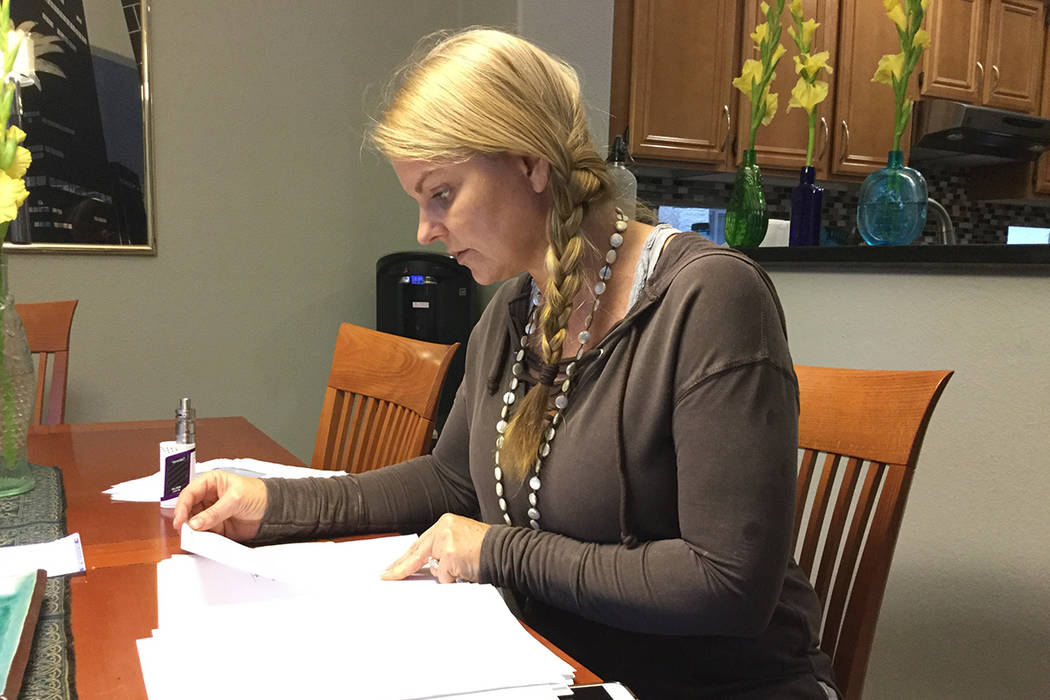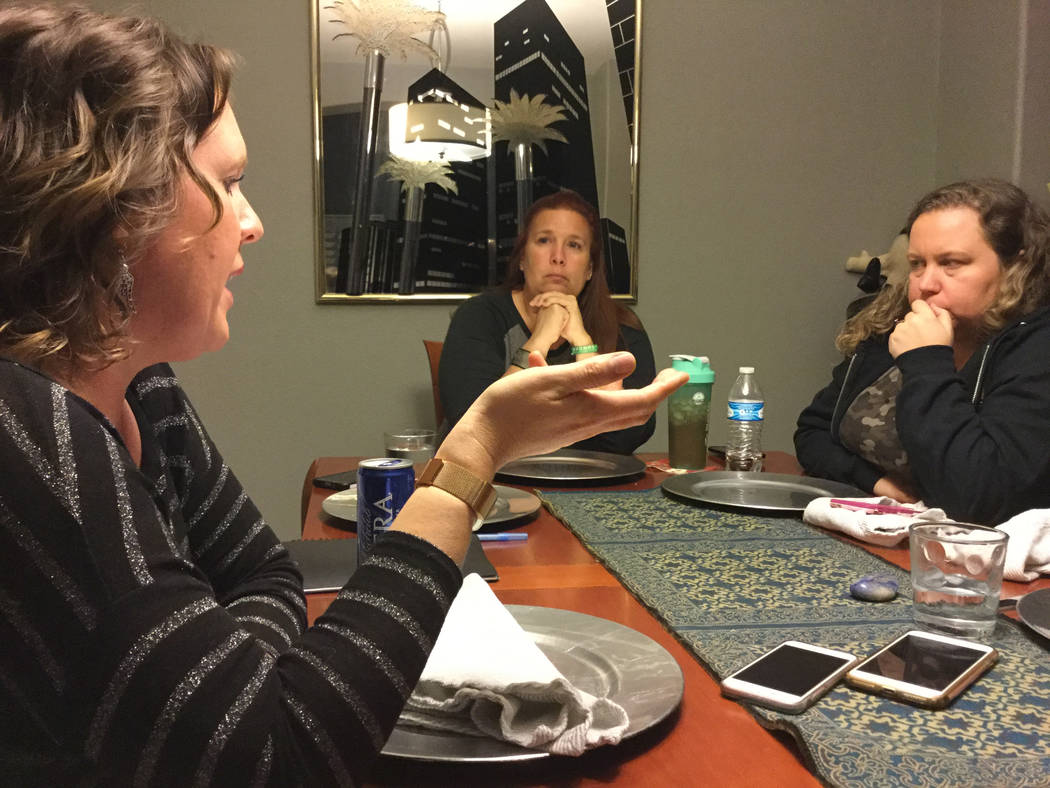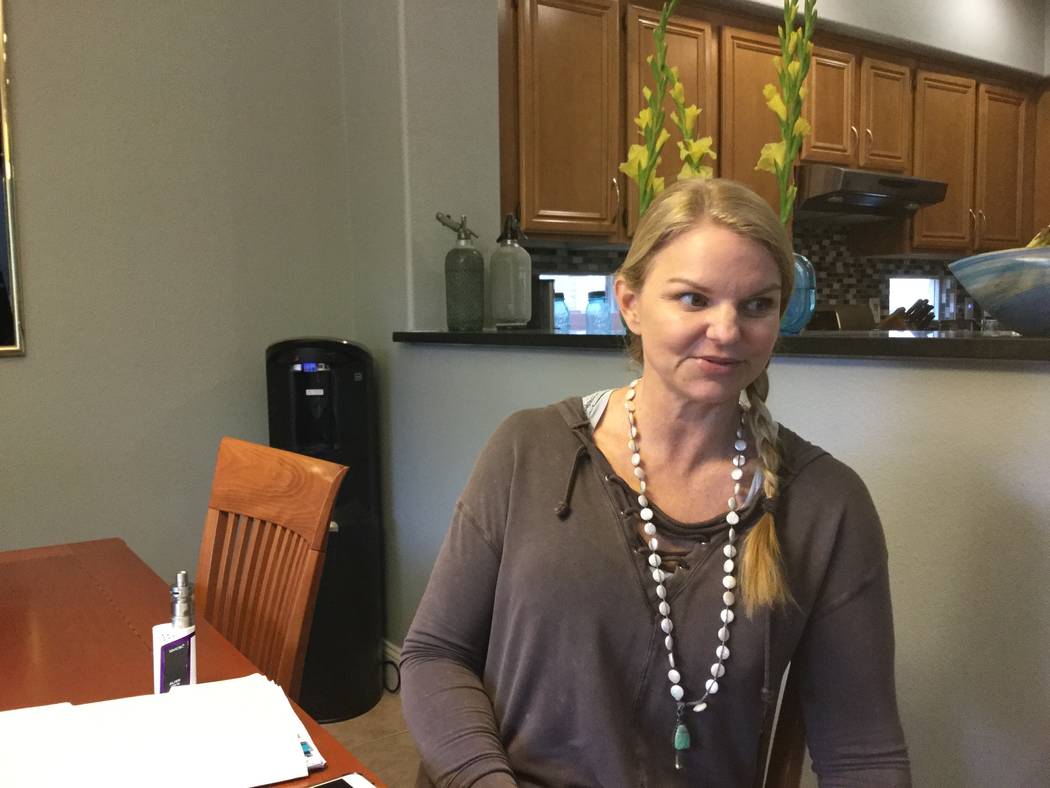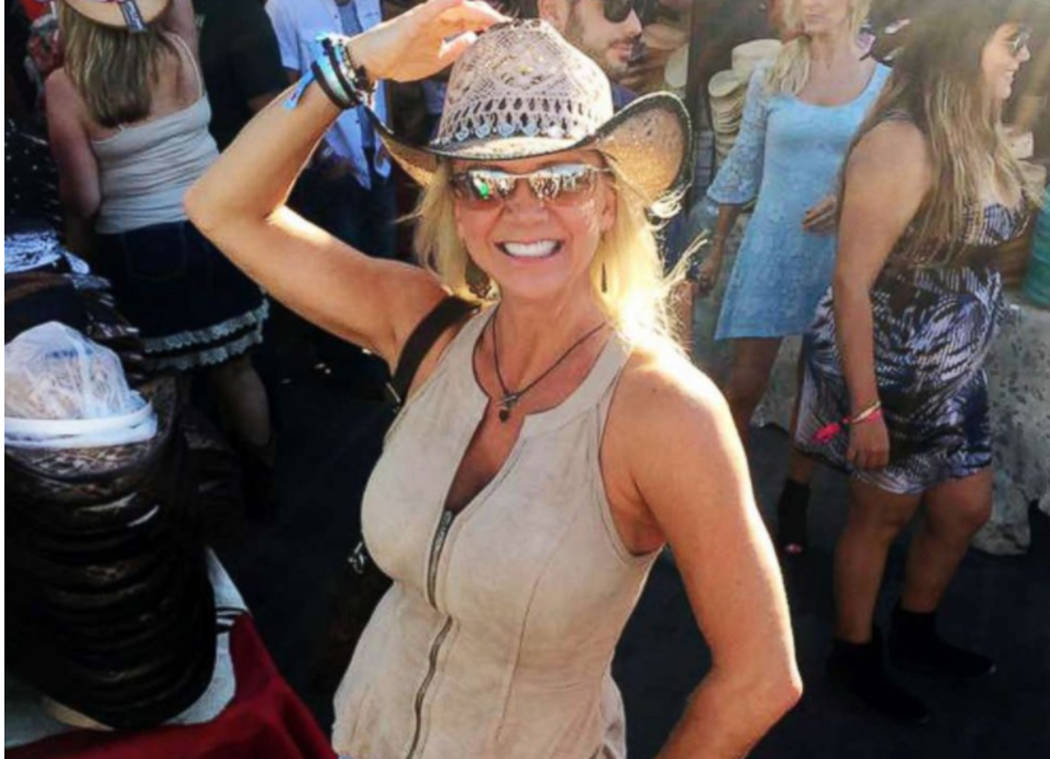Route91Strong helping Las Vegas shooting victims, families
The way Jennifer Holub sees it, there are three sources of funds for victims of the Oct. 1 shooting, and “everyone’s basically screwing everyone.”
The money in the Las Vegas Victims’ Fund is slated to go to people who fall into three categories, while the money in the Vegas Strong Fund isn’t slated to go directly to people at all — but has, and the Nevada Victims of Crime program money is slated to help reimburse certain expenses.
“Each of these funds is different, with money coming from different places, and so many people aren’t eligible, or aren’t receiving money, from all three of them,” said Holub, a Cedar City, Utah, resident who survived the mass shooting at the Route 91 Harvest festival.
Holub and others are now self-organizing to raise and distribute money to all of those impacted by the shooting who are falling through the cracks. 
Joining forces
On Jan. 16, Holub and Las Vegas resident and shooting survivor Christine Caria joined the board of Route91Strong, a public benefit corporation that was formed Oct. 20 by two survivors who live in California to raise money for other victims, survivors and families in need after the shooting. The group is working to get 501(c)(3) tax-deductible status from the IRS.
“Our intention was to raise money to give to the Las Vegas Victims’ Fund, who had a system and a process to vet people and distribute money,” said Lisa Fine, who founded Route91Strong with survivor Brian Claypool.
But that changed after the group learned about the three categories of people the Las Vegas Victims Fund would help:
1. The families of those who were killed in the shooting and people who sustained permanent brain damage and/or permanent paralysis resulting in continuous home medical assistance.
2. People who were physically injured as a result of the shooting and first admitted to a hospital between Oct. 1 and Oct. 10 for at least one night through Dec. 15.
3. People who were physically injured as a result of the shooting and who were treated on an emergency or outpatient basis on or before Oct. 10.
Fine said she was concerned about all of the other survivors who wouldn’t qualify and who are struggling now, like Las Vegas resident Ryan Trujillo.
Route91Strong now is working to develop a process for survivors to apply and then for the group to vet and distribute money.
“We’re trying to help people who have fallen through the cracks,” Claypool told the Review-Journal.
The group has 20 people already vetted and waiting for around $47,000 in estimated immediate financial needs combined. Route91Strong currently has $27,000 from two fundraising events it has held so far. The group is aiming to establish an application process and final protocols by next Friday.
Claypool said victims who are seeking financial relief will have to show some evidence of their financial trouble and presence in the Oct. 1 shooting and the group will do its best to vet needs on a case-by-case basis. 
‘That’s not fireworks’
Trujillo is among the 20 people who have already been vetted.
He was managing several bartenders at the Route 91 Harvest festival.
“That night was like any other night. We were all worn out, but excited that it was the last night. We all had a smile on our faces because we just made a bunch of money,” he said.
Trujillo said he was as expecting to make between $2,000 and $3,000 from working the music festival.
“We were supposed to get paid all the credit card tips from the whole weekend that night,” he said.
But then, around 10:05 p.m. he heard the first round of gunshots and identified the sound for what it was right away.
“I grew up in a small town in Idaho. When it comes to gunshots and stuff like that, I know exactly what it is and what it sounds like,” he said.
He heard people around him saying the sound was of fireworks.
“I said, ‘that’s not fireworks,’ and grabbed my bartenders and held them down,” behind an ATM which saved his life and the lives of several others.
“I kept pulling people on top of my lap to get behind this ATM. I could feel the bullets hit the machine, but nothing was going through.”
He and many others managed to flee the scene in the ensuing chaos and help others to do the same.
A financial roller coaster
Trujillo escaped with no physical injuries, but not without a mental and emotional toll.
A single dad, Trujillo made his way home to his 2-year-old daughter.
The next day, he woke up in disbelief of what had happened the night before.
As it sunk in, he felt increasingly isolated.
“I completely took myself off the map. I didn’t get on my phone at all. I stayed home. I almost lost my job because I just stopped going,” Trujillo said.
About a month later he said he went back to work as an audio/visual technician for CCS Systems.
But those weeks of no income made a big dent into his finances. He was living paycheck to paycheck before the shooting, and Oct. 1 exacerbated his financial position. He ended up taking home only $900 from working the festival. Rent, daycare payments, car insurance and a $6,000 bank loan became too much.
The bank ended up repossessing his car.
Trujillo said he thinks he applied for financial assistance from the Nevada Victims of Crime program Oct. 3 at the temporary Family Assistance Center that was set up at the Las Vegas Convention Center. The program made several payments in December to Trujillo’s daughter’s daycare provider, covering five full weeks of daycare in advance as well as a partial payment of $10, all totaling $1,000.
‘Just deal and keep moving’
In late December, Trujillo was also expecting financial help to come from the Vegas Strong Fund, but it never came. 
The fund was originally set up by the Nevada resort industry to “support long-term needs of the community.”
Virginia Valentine, president of the Nevada Resort Association, said previously that commitments to the Vegas Strong Fund were more than $12 million. However, that figure included cash and commitments from companies within the resort industry that have already donated to the Las Vegas Victims’ Fund, as well as amounts that were committed to the general cause of helping those impacted by the Oct. 1 tragedy but haven’t yet, or will never, land in the Vegas Strong Fund.
On Dec. 23, the fund made a one-time distribution of $14,800 directly to 12 survivors, after a plea for help from two survivors of the shooting, Holub and Caria, and a victim advocate, Anita Busch.
Vegas Strong Fund members say they were clear with the three women that the distribution would be a “one-time event,” but the three women say that they were under the impression that the distribution was to be ongoing, and had already began vetting and collecting financial needs for 17 others, including Trujillo.
“It was like a door finally opening with a ray of hope that I finally needed at the darkest time, then someone slamming it back in my face,” Trujillo said.
Vegas Strong Fund members have since said they will not again stray from their original mission, and no more checks will be issued directly to victims. Half of whatever ends up in the Vegas Strong Fund will go to supporting community needs as they see fit, and the other half will go to the Las Vegas Victims’ Fund by Jan. 31, they said.
Perseverance
After the Vegas Strong Fund said it would not be cutting any more checks directly to victims, Holub and others began to self organize to raise money for the 17 people and more who have immediate financial needs, which include food, shelter and medical expenses.
On Jan. 9, Holub received $1,637 through PayPal from Jason Beisick, a survivor who has been raising money for other survivors from Alberta, Canada. Holub sent the money to Trujillo the same day.
Beisick said he heard through other survivors that Holub was helping people with immediate financial needs and sent her the money. The two had already been connected through several survivor Facebook groups.
“I saw a lot of people in the Facebook groups starting GoFundMe pages and having little benefit get-togethers,” Beisick said. “I knew that people were struggling and wanted to help out in some way. Being in Canada, so far away, raising money is really the only way that I felt I could.”
Beisick began accepting photos on social media Oct. 21 to raise money by creating photo books online using a print-on-demand website.
He posted them for sale in the first half of December and has received more than 130 orders so far.
“There is more coming,” he said. “After that, I started making shirts and coffee mugs.”
So far the other items have raised over $1,100, he said, adding that he’ll keep sending money to Holub to be distributed to people who need help.
When Trujillo got the check Jan. 9, he said he paid for his daughter’s day care for a couple of weeks in advance, and was able to catch up on his utility bills.
“I’ve had to call and pretty much beg them not to turn my stuff off,” he said. “This is the first time I have all of my bills paid and I’m not worried if I can buy groceries or diapers for my daughter.”
But, he said he’s bracing for when things get tough again.
“It’s going to be a roller coaster for a while,” he said.
Contact Nicole Raz at nraz@reviewjournal.com or 702-380-4512. Follow @JournalistNikki on Twitter.
Route91Strong
Founded Oct. 20
Contact: route91strong.org
Co-founded by: Lisa Fine and Brian Claypool
Executive board members
Lisa Fine, survivor, president
Brian Claypool, survivor, vice president/secretary
Dave Freudenberger, chief financial officer
Board members: Tennille Greenfield, survivor; Greg Greenfield, survivor; Jen Holub, survivor; Christine Caria, survivor; Bryan Hopkins, survivor; Ben Carey, survivor; LoriDawn Messuri; Blake Gotts; Ken Cavalli; Denise Beingessner; Kevin Harold


























